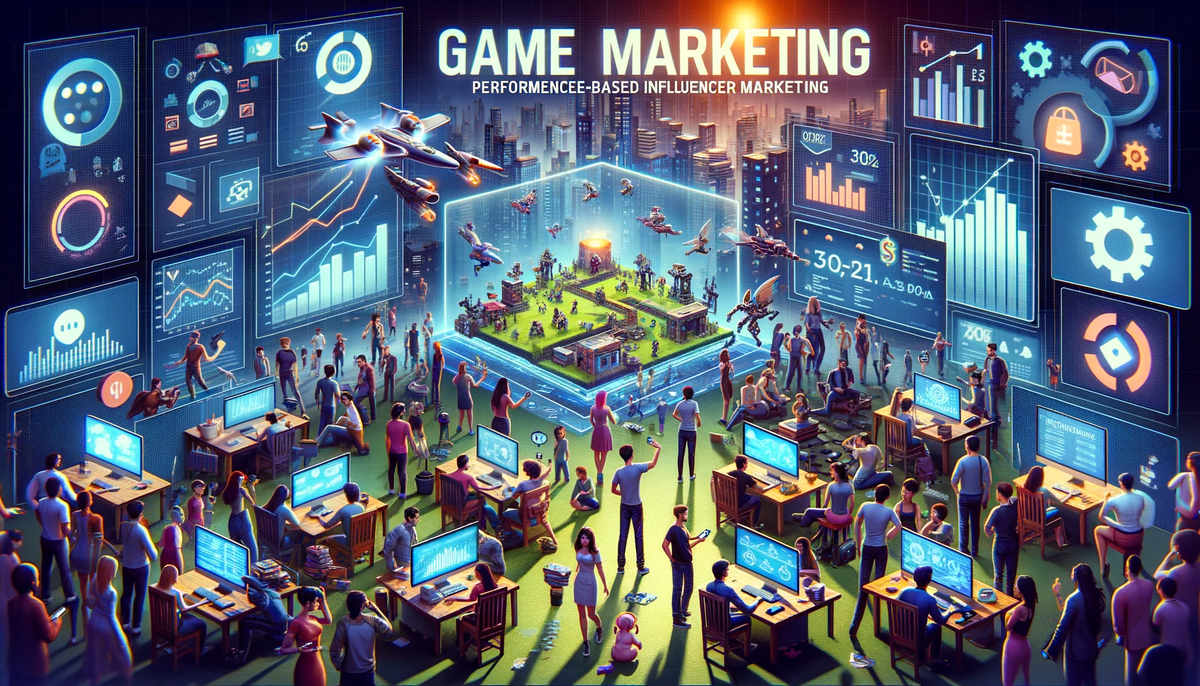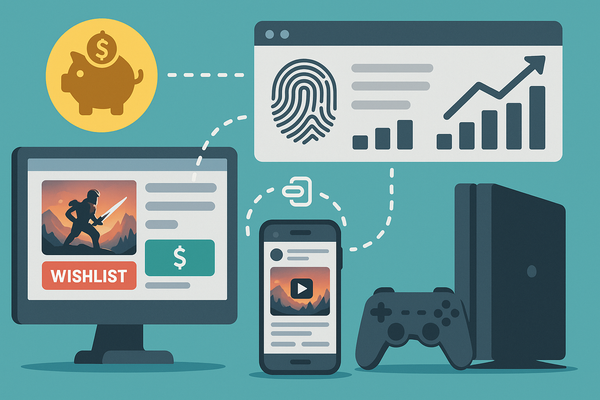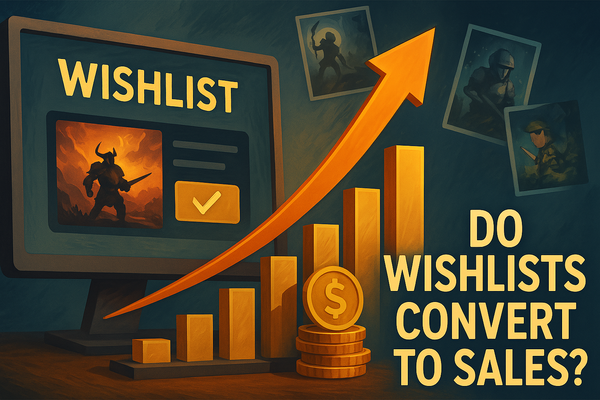How Gaming Publishers Can Optimize Influencer Marketing
Explore the power of marketing in gaming: from AAA titles to indie gems, understand how to maximize ROI, engage users, and leverage influencer strategies. Dive into setting objectives, choosing social platforms, and implementing hybrid models for success.

Marketing is the lifeblood of a game's success. While there are rare tales of games achieving viral fame without a marketing push, these instances are outliers. Big-league AAA titles often allocate a staggering $150 million to marketing, while independent games typically invest around $50,000. This disparity underscores the universal truth that effective marketing is indispensable, regardless of the game's scale.
The golden rule of marketing is ensuring a healthy return on investment (ROI). For the gaming industry, this translates directly into user engagement. Freemium games thrive when more players engage with their content and ads, whereas premium games see success through increased game purchases. Additionally, even games that rely on in-game purchases benefit immensely from an expanded user base, as it amplifies potential revenue channels.
Enter the realm of performance-based influencer marketing, a strategy designed to maximize ROI. This approach incentivizes influencers to align their efforts with the goals of both game publishers and indie developers. Instead of a flat fee, influencers are rewarded based on tangible outcomes that contribute to the game's growth. This model not only fosters efficiency but also ensures that marketing expenditures translate into real results.
In the upcoming article, we delve into the nuts and bolts of this approach. We'll explore how to set clear objectives, select the most effective social platforms for your goals, design influencer campaigns that motivate and yield results, and implement strategies to minimize risk. This guide is your compass in navigating the dynamic landscape of game marketing, helping you to turn your vision into a success story.
Setting Your Objectives
Before launching into the thick of a campaign, the initial requirement is to solidify your objectives. Games in various stages of development and release have distinct needs. Consider a game on the cusp of its debut; its primary focus leans heavily towards conversions that usher in a wave of new users—actions like Steam Wishlist signups are golden.
On the other hand, a game rolling out fresh downloadable content (DLC) might pivot towards amplifying brand awareness, aiming to rekindle the excitement and engagement of its existing player base. Understanding these nuances is key to tailoring a campaign that resonates with your goals and propels your game forward.
Common objectives in game marketing are:
1. Awareness and Reach: The primary objective is often to generate awareness among a broad audience. This includes creating buzz and excitement around the game's release.
2. Community Building: Engaging with players and building a community around the game can lead to a loyal fan base.
3. Player Acquisition: Attracting new players is crucial to reach potential players likely to be interested in the game's genre or style.
4. Retention: Keeping players engaged over time is as important as acquiring them. This can involve updates, expansions, in-game events, and community engagement strategies to keep the game fresh and exciting.
5. Monetization: Developing effective strategies to drive revenue from the game, whether through upfront purchases, in-game transactions, subscriptions, or ad revenue. Understanding the target market and what they're willing to pay for is crucial.
6. Branding: Creating a strong, recognizable brand for the game and the studio behind it helps in establishing credibility and loyalty, making it easier to market future games.
7. Market Research: Understanding the market, including competitor analysis and player preferences, to inform marketing strategies and game development.
8. Data-Driven Insights: Utilizing data analytics to understand player behavior and preferences, optimize marketing campaigns, and improve the game based on user feedback.
These objectives are often interconnected, with success in one area fueling improvements in others. The overall goal is to create a successful, well-loved game that stands out in a crowded market. Once the objectives have been established, then a campaign must be created that will meet those objectives.
Aligning Social Platforms and Objectives
When selecting social platforms for marketing a game, it's crucial to consider which ones align best with your specific objectives. Each platform has its unique strengths and user demographics, making some better suited for certain marketing goals than others.
Here are examples of how you might align your objectives with the most appropriate platforms:
1. Awareness and Reach:
- YouTube: Ideal for trailers, gameplay videos, and influencer partnerships to reach a broad gaming audience.
- TikTok: Great for viral content and reaching a younger demographic with short, engaging clips.
- Twitter: Useful for real-time updates, engaging with trends, and connecting with gaming communities.
2. Community Building:
- Glitch: Glitch offers a built in community tool that combines forums, live streaming and esports. Which is ideal for building communities.
- Discord: Good for building a dedicated community, offering direct interaction, and gathering feedback.
- Reddit: Engage with dedicated gaming subreddits for in-depth discussions and community feedback.
- Facebook Groups: For connecting with specific gaming communities and creating a space for fans to interact.
3. Player Acquisition:
- Twitch: Collaborating with streamers can showcase your game and attract players who are interested in the genre.
- Kick: A fast growing streaming site where streamers can attract and engage potential new players.
4. Retention:
- Twitter and Facebook: Good for keeping players informed about updates, events, and engaging them with content.
- Reddit: Great community for having discourse about the game..
- YouTube: For posting update videos, behind-the-scenes looks, and community highlights to keep players engaged.
5. Branding:
- Instagram: Great for building a visual brand identity and connecting with a broad audience through appealing visuals.
- Twitter: For establishing a brand voice, sharing news, and engaging directly with the gaming community.
6. Market Research:
- Reddit and Twitter: These platforms provide valuable insights into player opinions and trends within the gaming community.
- Facebook Groups: For gathering focused feedback from dedicated segments of your audience.
7. Data-Driven Insights:
- Most platforms offer analytics tools (e.g., Twitter Analytics, YouTube Analytics) that can provide valuable data on your audience's behavior and preferences.
When planning your campaign, it's also vital to consider the type of content that works best on each platform, the time and resources you have available to manage your presence, and where your target audience is most active. The best approach is often a mix of several platforms to cover all aspects of your marketing objectives effectively.
The Relationships Between Metrics and Objectives
Once your objectives are defined and the optimal social platforms selected, the next step is to craft a compelling reward system for influencers that aligns with those objectives. Glitch offers a pivotal tool in this endeavor: a rate card. This innovative feature allows you to reward influencers for specific, measurable actions they drive on social media.
The rate card is a dynamic tool, offering rewards for a spectrum of actions including clicks, views, engagements, shares, and comments. For instance, if your aim is to boost awareness, you might configure the rate card to reward influencers more generously for garnering views on Twitter and TikTok compared to Reddit or Facebook. Conversely, if your goal is to foster a vibrant community, you might incentivize influencers to stimulate discussions on Reddit and Facebook, rather than simply accumulating views.
An example of a rate card is below:

Through the rate card, you can focus an influencer's efforts based on your objectives.Here's how each of metrics can support various marketing objectives:
1. Views (Awareness and Reach): Views are essential for measuring the reach of your content. High view counts indicate that the influencer's content is being seen by a large audience, which is crucial for building awareness about your game.
2. Shares (Community Building and Virality): Shares are a strong indicator of community engagement and the potential virality of the content. When users share content, it shows that they find it compelling enough to spread within their own networks, which can help in building a community and extending the reach beyond the influencer's immediate followers.
3. Clicks (Player Acquisition and Conversion): Clicks, especially on links directing to the game's website or store page, are critical for driving player acquisition. This metric helps in understanding how effective the influencer's content is in motivating viewers to take action, such as learning more about the game or making a purchase.
4. Engagements (Brand Engagement and Loyalty): Likes, upvotes, and similar non-verbal interactions are good indicators of audience engagement with the content. High engagement rates often reflect a positive reception of the game and can contribute to building brand loyalty and a strong online presence.
5. Comments (Feedback and Community Interaction): Comments provide valuable insights into audience feedback and sentiment. They also represent a higher level of engagement since commenting requires more effort than likes or shares. Comments can foster discussions, helping in community building and providing direct feedback about the game.
For effective influencer marketing in the context of game promotion, you would ideally want a balance of all these metrics. However, the emphasis on each metric may vary depending on your specific marketing goals.
Hybrid Marketing Model
Navigating the influencer landscape means understanding that not all creators are keen on compensation models based solely on performance metrics. To bridge this gap and collaborate with those who prefer a mix of assurance and incentive, Glitch introduces a versatile 'hybrid mode' for your campaigns.
Hybrid mode strikes a balance by offering influencers an upfront flat fee. This fee can be a standard amount or tailored to their follower count—for instance, at a rate of $0.50 per follower, an influencer with 500,000 followers would receive a $250 kickstart.
Consider this scenario: an influencer receives a $250 flat fee and is also poised to earn $1 per comment. Should their post spark 200 comments, their total earnings would climb to $450. Conversely, a post eliciting just 5 comments would see them pocketing $255. This structure ensures that while influencers have a secure base, their motivation to excel remains, tying their additional earnings directly to their performance.
The hybrid model is a symphony of balance, offering a shared space of risk and reward. Influencers gain a safety net, ensuring they don't walk away empty-handed from less successful campaigns, yet they also have the runway to boost their earnings significantly through high performance. Meanwhile, game publishers and indie developers benefit from a more predictable budgeting framework, with the potential for higher payouts serving as a bet on the influencer's ability to truly engage and expand their audience. This approach not only cultivates a more equitable partnership but also aligns everyone towards the common goal of maximum campaign impact.
Controlling Your Spending Limits
As you solidify your objectives and delineate the metrics for compensating influencers, a crucial element of performance-based marketing emerges: controlling your expenditure. While this approach offers precision, costs can escalate quickly, especially if an influencer's campaign takes off beyond expectations. For instance, if you're fostering community engagement at $1 per comment with a $2,000 budget, an exceptionally viral Reddit post generating 5,000 comments could unexpectedly triple your costs.
Glitch offers a savvy solution to this predicament: setting a maximum spend per influencer. This feature allows you to cap the earnings of an influencer, ensuring you never exceed your budgetary comfort zone. Imagine setting a $750 limit for an influencer who, on top of a $250 flat fee, drives 800 comments. Ordinarily, this would tally up to $1,050, but with the cap in place, your liability is contained at $750. Influencers are made aware of these limits upfront, setting clear boundaries and expectations for the campaign.
This method offers influencers a tangible earnings spectrum, motivating them to strive for the upper bounds of their potential reward. The optional flat fee in the hybrid model acts as a guaranteed baseline, providing a sense of security and incentive. It's a strategy that balances ambition with assurance, offering a structured yet flexible framework for your marketing campaigns.
Executing Your Campaign
We've journeyed through the maze of game marketing, from setting clear objectives to controlling your costs with a savvy hand. Remember, while the world of influencer marketing is as vast as the gaming universes we love, navigating it with a solid plan and a flexible approach is key. Whether you're aiming for the stars with a AAA title or crafting a heartfelt indie game, the strategies we've discussed are your trusty sidekick, ready to help you make a mark in the gaming world.
So, keep your objectives sharp, your influencers motivated, and your budget in check. With tools like Glitch's rate card and hybrid model, you're not just throwing darts in the dark; you're strategizing like a pro, ready to hit those bullseyes of user engagement and community building. Now, go on and turn that game of yours from a hidden gem into the next big talk of the town. Game on!




